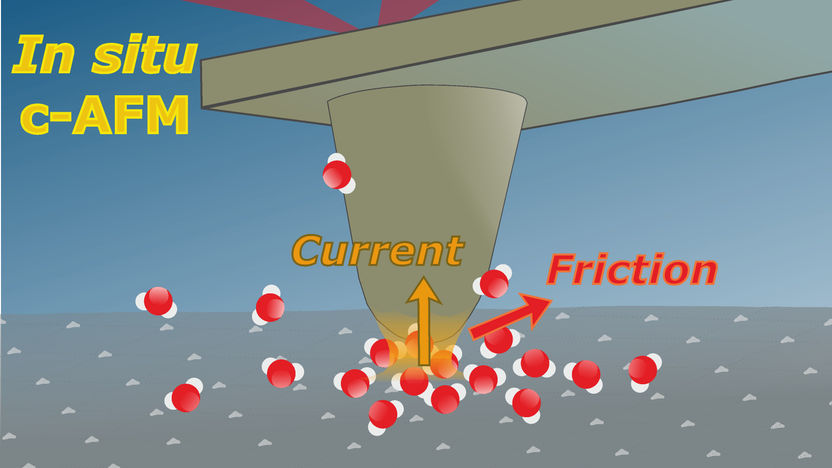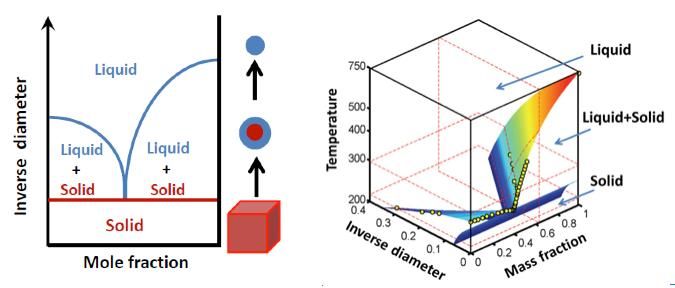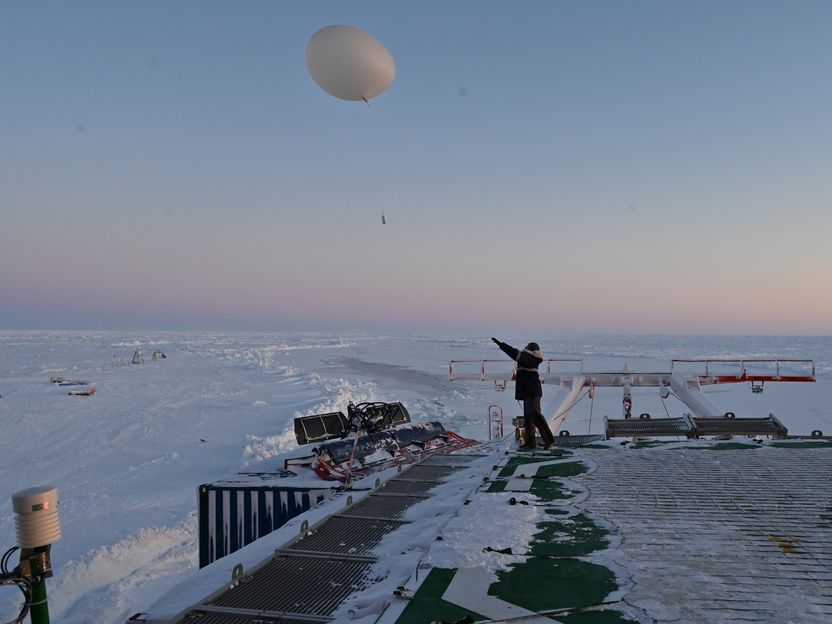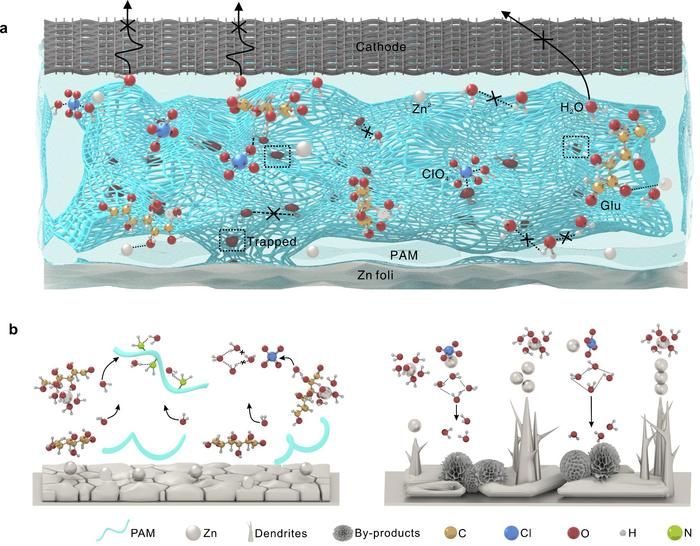Electrocatalysis under the atomic force microscope
More insights with AFM
A further development in atomic force microscopy now makes it possible to simultaneously image the height profile of nanometre-fine structures as well as the electric current and the frictional force at solid-liquid interfaces. A team from the Helmholtz-Zentrum Berlin (HZB) and the Fritz Haber Institute (FHI) of the Max Planck Society has succeeded in analysing electrocatalytically active materials and gaining insights that will help optimise catalysts. The method is also potentially suitable for studying processes on battery electrodes, in photocatalysis or on active biomaterials.

The principle of correlative atomic force microscopy in contact mode: a fine tip at the end of a cantilever scans the surface. This allows force interactions between the tip and the sample surface to be measured, including frictional forces. If a voltage is also applied, the electric current flowing through the contact can also be measured.
M. Munz /FHI / HZB
To manage the energy transition, it will also be important to rapidly develop cheap and efficient materials that can be used to split water or CO2 by electrocatalysis. In this process, part of the electrical energy is stored in the chemical reaction products. The efficiency of such electrocatalysts depends largely on the nature of the electrode-electrolyte interfaces, i.e. the interfaces between the solid electrodes and the typically aqueous electrolyte. However, spatially resolved physical studies of such solid-liquid interfaces are still relatively scarce.
More insights with AFM
Dr Christopher S. Kley and his team have now developed a new approach to correlative atomic force microscopy (AFM). An extremely sharp tip is scanned across the surface and its height profile is recorded. By attaching the tip to the end of a miniaturised cantilever, the force interactions between the tip and the sample surface, including frictional forces, can be measured with high sensitivity. In addition, the electrical current flowing through the mechanical contact can be measured, provided a voltage is applied. "This allowed us to simultaneously determine the electrical conductivity, the mechanical-chemical friction and the morphological properties in situ (i.e. under the relevant liquid-phase conditions rather than in vacuum or in air)," emphasises Kley.
Copper-gold electrocatalyst
Using this method, the scientists now studied a nanostructured and bimetallic copper-gold electrocatalyst, in collaboration with Prof. Beatriz Roldán Cuenya from the Fritz-Haber-Institute (FHI). Among others, such materials are used in the electrocatalytic conversion of CO2 into energy carriers. "We were able to clearly identify islands of copper oxide with higher electrical resistance, but also grain boundaries and low-conductivity regions in the hydration layer where the catalyst surface comes into contact with the aqueous electrolyte," says Dr Martin Munz, first author of the study.
Such results on catalyst-electrolyte interfaces help to optimise them in a targeted manner. "We can now observe how local electrochemical environments influence charge transfer at the interface," says Kley.
Focus on solid-liquid interfaces
"However, our results are also of general interest to energy research, especially for the study of electrochemical conversion processes, which also play a role in battery systems." Insights into solid-liquid interfaces can also be useful in completely different areas of research, such as understanding corrosion processes, nanosensor systems, and possibly addressing scientific queries in fluidics and environmental sciences, such as dissolution or deposition processes on metal surfaces exposed to water.
Original publication
Other news from the department science

Get the chemical industry in your inbox
By submitting this form you agree that LUMITOS AG will send you the newsletter(s) selected above by email. Your data will not be passed on to third parties. Your data will be stored and processed in accordance with our data protection regulations. LUMITOS may contact you by email for the purpose of advertising or market and opinion surveys. You can revoke your consent at any time without giving reasons to LUMITOS AG, Ernst-Augustin-Str. 2, 12489 Berlin, Germany or by e-mail at revoke@lumitos.com with effect for the future. In addition, each email contains a link to unsubscribe from the corresponding newsletter.
Most read news
More news from our other portals
Last viewed contents

Edinburgh Instruments Ltd. - Livingston, United Kingdom

W. Dimer GmbH - Laufenburg, Germany
In chemical reactions, water adds speed without heat

More Electricity from the Sun - Surface modification for more effective textured perovskite/silicon tandem solar cells

Solid or liquid - the particle size matters - Max Planck researchers elucidate how the phase state of aerosol nanoparticles depends on their size

Climate Change makes Arctic Ozone Loss Worse - The expected recovery of the ozone layer may fail to happen anytime soon, if global warming is not slowed down
Applied Biosystems/MDS Sciex is the Top Supplier in the Mass Spectrometer Market

Fighting microplastics for a cleaner future - Dr. Manish Shetty is working to break down microplastics to create usable fuel

Novel strategy proposed for all-climate zinc-ion batteries - "This work shows how effective these batteries are, both in terms of capacity and their ability to operate over a wide range of temperatures"




























































